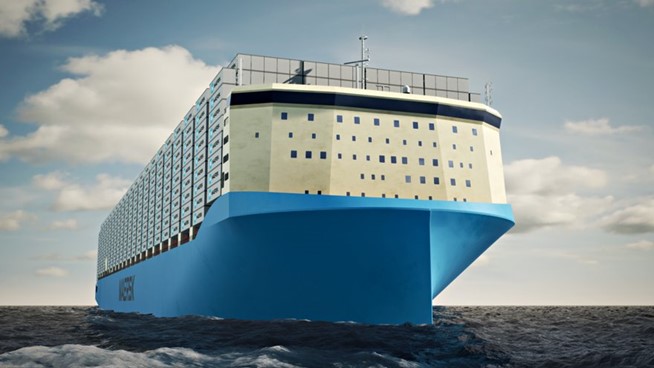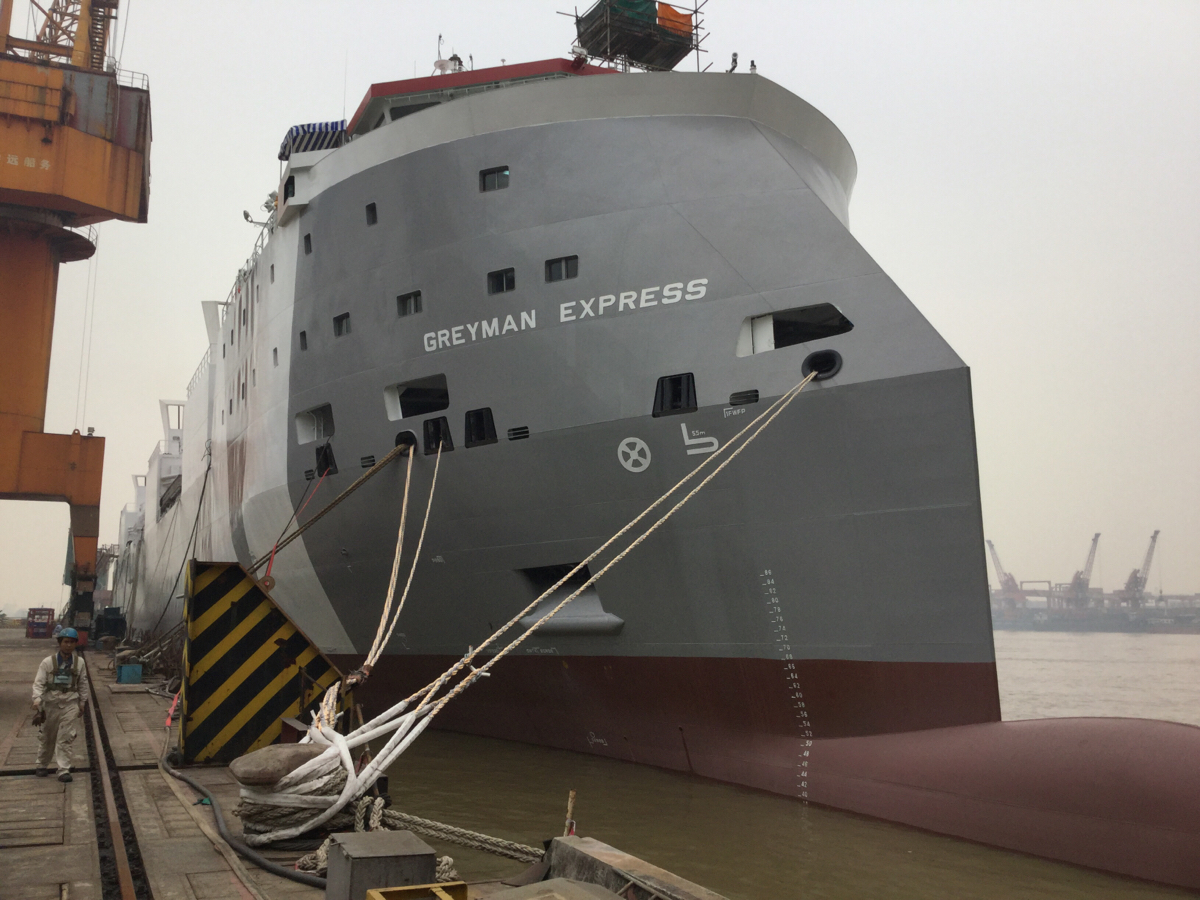Title Page
-
Vessel Name
-
Conducted on
-
Prepared by
-
Location
Items checked prior to vessel visit
Items checked prior to vessel visit:
-
1. Monthly safety equipment deficiencies corrected in timely manner?
-
2. Outstanding maintenance items (SAP work orders) reviewed?
-
3. Crew training up-to-date or plan to correct in place?
-
4. Most recent VCA, Vessel Crew Change Audit, Internal Vessel Audit, and SIRE inspection reviewed?
Credentials, Documentation, and Records:
Credentials, Documentation and Records:
-
1. Valid Certificate of Documentation (COD) on board? 46 CFR 67.313 & 319
-
2. FCC Ships Station License onboard and valid? 47 CFR 80.13
-
3. Is the operator aware of Marine Casualty reporting requirements? 46 CFR 140.900 & 46 CFR 4.05-1
-
4. Is the operator aware of Hazardous Conditions Reporting requirements? 33 CFR 160.215 & 33 CFR 164.82
-
5. Are vessels spaces clean and decently habitable (Crews Quarters, Toilet and Washing Spaces, Galley, Serving, Pantries, Lockers)? 46 CFR 137.220 (k) & 46 CFR 140.505 (e)
-
6. Review records of required examination & tests (steering systems, signaling whistle, navigational equipment, communications, navigational lights, towing gear and propulsion control, general alarm, fire pump)? 46 CFR 140.615 & 33 CFR 164.80
-
7. Is the Vessel Response Plan (VRP) accessible? 33 USC 1321 (j)(5) & 33 CFR 155.1045
-
8. Vessel emergency drills completed per the company's TSMS (record of emergency drills & instruction must include the date, description, and personnel involved)? 46 CFR 140.420(g)
-
9. Crewmembers - Safety orientation (Required prior to getting underway first time on a particular towing vessel)? 46CFR 140.410(d)
-
10. Non-Crewmembers - Individuals that are not crew members provided vessel safety orientation? 46 CFR 140.415
-
11. Are crew emergency duties & duty stations posted at each operation & in a visible location in a space commonly visited by crew? 46 CFR 140.405(c)
-
12. Is there a current crew roster with positions onboard? 46 CFR 140.400
-
13. Is the vessel free of conditions that pose a health/safety hazard to crew, vessel, or environment? 46 CFR 140.505
-
14. Is the towing vessel record (TVR) being maintained per the company's TSMS? 46 CFR 140.910
-
15. Are quality Navigational Assessments being documented in the TVR? 46 CFR 140.635
-
16. Is the Marine Information Kiosk functioning?
-
17. Is the Responsible Carrier Officer (RCO) program being fully implemented on board?
Navigation Safety Equipment
Navigation Safety Equipment
-
1. Are up-to-date electronic navigation charts available onboard? 46 CFR 140.705
-
2. Is the Captain/Pilot familiar with actions required in the event of electronic chart system (ECS) loss?
-
3. Is a USCG Light List for area of operation accessible onboard? 33 CFR 164.72(b)(1)
-
4. Are USACE Notices to Navigation Interests or USCG Local Notice to Mariners accessible? 33 CFR 164.72 (b)(2)
-
5. Able to access River Stages? 33 CFR 164.72 (b)(2)
-
6. Are VTS Rules accessible onboard? 33 CFR 83.01(g)
-
7. Are Inland Navigation Rules accessible onboard? 33 CFR 83.01(g)
-
8. Is the Automatic Identification System (AIS) functioning and programmed with accurate vessel info? 46 CFR 140.725 & 33 CFR 164.46(b)
-
9. Is a VHF radio connected to a functioning battery backup? 33 CFR 164.72
-
10. Are the Red and Green side lights; fitted with black screen (> 20 Meters (65.6ft) working properly? 33 CFR 83.23
-
11. Two yellow towing lights in a vertical line (Inland) functioning? 33 CFR 83.24(c)
-
12. Whistle audible 1 mile? 33 CFR 86.23
Life Saving Equipment
Life rings
-
1. Does the number and positioning of lifebuoys on the vessel meet the company's requirements (as listed in the TSMS)? Reference "Marine - Standard - Vessel Lifebuoys"
-
2. Are ring buoys stowed capable of being rapidly cast loose? 46 CFR 141.360(b)(2)
-
3. Are life ring buoys in serviceable condition? 46 CFR 141.360(b)(1)
-
4. At least 2 lifebuoys have approved floating electric water light with lanyard attached to lifebuoys, at least 1 lifebuoy fitted with buoyant lifeline (at least 60 ft.)? 46 CFR 141.360(c)(1)(2)
-
5. Each lifebuoy marked with vessel name? 46 CFR 141.360(b)(4)
Type I Life Jackets
-
7. Are there adequate number of lifejackets onboard per the COI manning? 46 CFR 141.340(a)
-
8. Is each lifejacket marked with vessel name? 46 CFR 141.340(f)(1)
-
9. Do lifejackets have 31sq. in. of retro reflective material on front and back in upper quadrant? 46 CFR 141.340(f)(2)
-
10. Are all lifejackets in serviceable condition? 46 CFR 141.340
-
11. Do lifejackets have approved lights attached to front shoulder & power source not expired? 46 CFR 141.340(g)(1)
-
12. Do all lifejackets have whistles secured by cord? 46 CFR 141.340(g)(2)
-
13. Are lifejackets stowed in readily accessible location? 46 CFR 141.340(d)
-
14. Are lifejacket stowage positions marked? 46 CFR 141.340(h)
Type V Work Vest
-
15. If spare work vests are stored in containers, are they marked with the words “WORK VEST”? 46 CFR 140.430(b)
Equipment & Duties
-
16. Is towing vessel equipped with industrial type first aid cabinet or kit (and contains no expired items)? 46 CFR 140.435(a)
-
17. Has lifesaving equipment been inspected tested and maintained as required? 46 CFR 141.235
-
18. Are inspections and tests recorded as required? 46 CFR 141.235
-
19. Do all personnel on board know what to do if someone falls overboard?
-
20. Is the crew familiar with the location and use of all person-in-water retrieval equipment?
Towline & Terminal Gear Equipment
Towline & Terminal Gear Equipment
-
Are face wires, spring lines, deck machinery, and push gear appropriate, frequently inspected and serviceable? 33 CFR 164.76
Pollution Prevention
Pollution Prevention
-
1. Is there an adequate supply of chemicals for MSD tank onboard? 33 CFR 159.65
-
2. Does MSD have proper certification label and operating placard? 33 CFR 159.59
-
3. Are Garbage Placards posted in galley and at the garbage storage location? 33 CFR 151.59
-
4. Is the vessel compliant with MARPOL Annex VI? Copy in Red Book? MARPOL Annex VI 40 CFR 94
-
5. Are Declarations of Inspections (DOI) for last 30 days onboard or accessible? 33 CFR 156.150
-
6. Is oil pollution placard posted in the machinery space or at the bilge and ballast pump control station? 33 CFR 155.450
-
7. Are all hoses in oil service properly marked? 33 CFR 155.800
-
8. Is the spill containment system at hose connections, vents & fills in good condition? 33 CFR 155.320
-
9. Are oil transfer procedures available/posted? 33 CFR 155.720/740
-
10. Is the VGP inspection being completed and recorded daily? EPA VGP 4.1.1
Firefighting & Prevention Equipment
Firefighting & Prevention Equipment
-
1. Does the vessel have B-V semi-portable fire extinguishing system or a fixed fire-extinguishing system to protect engine room and have operating instructions posted? 46 CFR 142.315(a)(3)(i)
-
2. Are all fire extinguishers in serviceable condition and been tested? 46 CFR 142.230
-
3. Are bilges and void spaces kept free from accumulating combustible and flammable materials/liquids? 46 CFR 142.220(a)
-
4. Storage areas kept free from accumulating combustible materials? 46 CFR 142.220(b)
-
5. Are paints, coatings other flammables/combustibles stored in a designated storage area or cabinet? 46 CFR 142.225(a)
-
6. Are flammable storage cabinets secured to vessel to prevent movement? 46 CFR 142.225(c)
-
7. Is a B-II portable extinguisher located near the designated area? (within 50' and in sight of flammable cabinet/storage room) 46 CFR 142.225(d)
-
8. Has fire detection system had annual test? 46 CFR 142.330(a)(2)
-
9. Fixed fire pump: Are all valves necessary for operation in open position; or capable of operation from remote valve? 46 CFR 142.325(b)
-
10. Fire main system: Are sufficient number of fire hydrants with attached hose to reach any part of the machinery space using a single length of fire hose? 46 CFR 142.325(c)
-
11. Is an approved fire hose connected at each hydrant (minimum 1.5” diameter & 50’ length)? 46 CFR 142.325(d)
-
12. Are nozzles made of corrosion-resistant material capable of spray & straight stream? 46 CFR 142.325(d)
-
13. Is the fire pump self priming and operating in satisfactory condition? 46 CFR 142.325 (e)
-
14. Are all fire axes in satisfactory condition? 46 CFR 142.227
-
15. Do berthing space & lounges have smoke alarms, with installed detection or individual battery operational? 46 CFR 142.330(b)
Machinery and Electrical Systems
Machinery and Electrical Systems
-
1. Flammable & combustible materials not stored in machinery spaces, unless stored in suitable container that meets requirements in 46 CFR 142.225? 46 CFR 143.220(c)
-
2. General alarm - Can be activated from the pilot house to notify persons on board of emergency and tested weekly? 46 CFR 143.235(b)(1)
-
3. General Alarm - Capable of notifying in any accommodation, work space, and engine room? 46 CFR 143.235(b)(2)
-
4. Has installed, in the engine room and any other area where background noise makes a general alarm hard to hear, a supplemental flashing red light identified with a sign that reads "ATTENTION GENERAL ALARM - WHEN ALARM SOUNDS OR FLASHES GO TO YOUR STATION"? 46 CFR 143.235(b)(3)
-
5. Is the fuel shutoff valve operable from a safe place outside the space where valve is installed? 46 CFR 143.260(d)
-
6. Is the fuel shutoff valve control marked (1 inch letters) indicating purpose and the way to operate it? 46 CFR 143.260(e)
-
7. Are vent pipes for integral fuel tanks discharge to weather deck through a bend of 180 degrees, and fitted with 30 x 30 mesh flame screen? 46 CFR 143.265(c)
-
8. Is lighting suitable within crew working and living areas? 46 CFR 143.410(a)
-
9. Does emergency lighting provide sufficient illumination under emergency conditions to facilitate egress from each space? 46 CFR 143.410(b)
-
10. Is vessel equipped with at least two portable, battery powered lights located in the pilothouse and at access to engine room? 46 CFR 143.410(c)
Existing towing vessel construction and arrangement requirements
Existing towing vessel construction and arrangement requirements
-
1. Is vessel's official number marked on a clearly visible interior structural part of the hull? 46 CFR 67.121
-
2. Is vessel's name and hailing port properly marked? 46 CFR 67.123(a)(b)
-
3. Are draft marks visible? 46 CFR 144.160(c). Note: Only required on "new towing vessels" and vessels operating under a Stability Document.
-
4. Are watertight doors and hatches marked with “WATERTIGHT DOOR – KEEP CLOSED” or “WATERTIGHT HATCH – KEEP CLOSED” 1" High lettering? 46 CFR 144.160(e)
-
5. Are escape hatches and Emergency exits marked with “EMERGENCY EXIT, KEEP CLEAR” (2" Lettering)? 46 CFR 144.160(f)
-
6. Do crew accommodations help provide a suitable environment for sleep and off-duty rest? 46 CFR 144.720
-
7. Are exposed hazards such as gears and rotating machinery are protected by a cover, guard, or rail? 46 CFR 144.820
-
8. Are means provided to ensure that windows immediately forward of the operating station in the pilothouse allow for adequate visibility regardless of weather conditions (windshield wipers, defoggers, clear-view, etc., for intended route)? 46 CFR 144.905(b)












